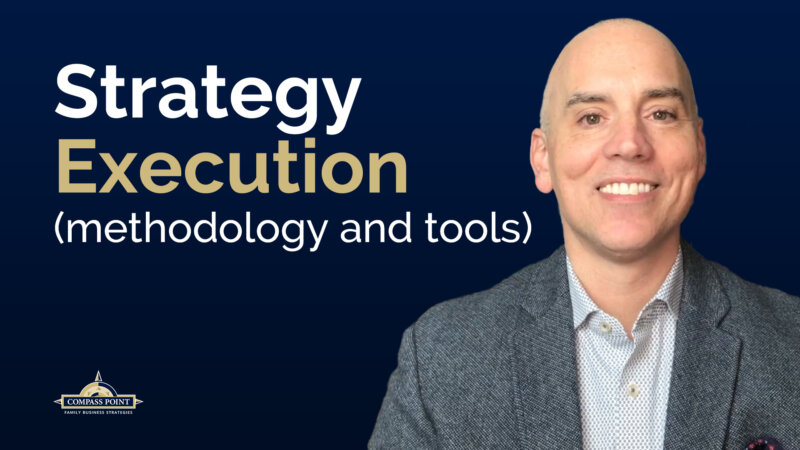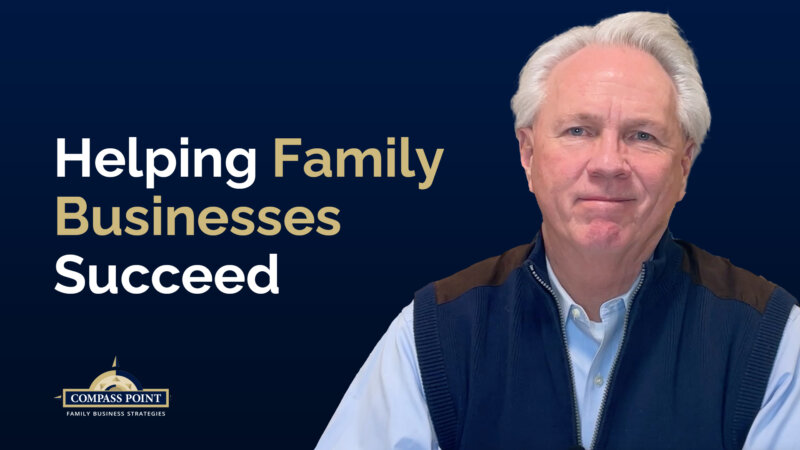VIDEO
The Player Grid
The biggest barrier to growth in a family business is who you have working in it. To be a great company, start by figuring out who you want there and then what you want. Our Player Grid helps you identify the top performers in your organization based on the key behaviors everyone should demonstrate and their performance. Then you can see where changes need to be made. Our managing partner Tom Garrity walks through how to use The Player Grid and how it can benefit your organization.
Transcript:
Hi, I’m Tom Garrity, the managing partner with Compass Point family business consulting where we build successful businesses, aligned ownership groups, and stronger families. I have a question for you. Would you enthusiastically rehire everyone in your organization? The answer is probably not. And we find this as the single biggest barrier to growth in a family business and certainly is going to be a significant issue at the time of transition when we’re trying to get to the next generation of leadership and ownership.
You know, several years ago, Jim Collins wrote the book Good to Great. And everybody was excited to finally find out what’s the silver bullet, you know, that these companies that went from being good companies to becoming great companies. You know, was it their strategy, do they have this phenomenal business model or, you know, R&D department? And although all those things are important, and they’re important in your family business, without exception, every single company that went from being a good company to a great company, figured out who first and then what. Who first, then what. Sounds so simple, but getting a company of people, of employees aligned, aligned around a common set of values, that believe in your purpose as an organization, as a business, and are up for the vision that you have for that business. Now, you got a real shot to be successful in the marketplace, and to be a successful family business, that generationally can continue its traditions. So how do you do that? Where do you start?
We designed a tool called The Player Grid, which you can find on our website, in which there are four quadrants and your entire company can be, every single person can be, put in one of the four quadrants. On the vertical axis are core values, you know, those key behaviors that everybody needs to have, and align to, to be successful in your company. And on the horizontal axis is productivity, are they doing what they’re paid for?
So in your upper right-hand corner, are your A players, right? They’re your best people in the company, they’re aligned to your core values, they’re doing what they’re paid for exceptionally. We want a whole company of A players. Might not have a whole company, but that’s the goal.
B players in the upper left corner are the right who, they’re aligned to your core values, but they’re not quite productive yet. So got one or two things going on, they either could be new, they just haven’t developed yet, and they need more training. Or they’re in the wrong seat. You get them in the right seat and now they can be more productive and competent in their work.
Bottom left corner are C players that just blew it in the interview like they gotta go right now. They, they’re not aligned to your core values, they can’t do what you pay them for. You got to get better at your interviewing work. And you got to get rid of C players and get the right people in.
And then your bottom right corner are probably your most dangerous people in the company. They’re B/Cs or what we call the toxic A players. They’re nailing it, their results are extraordinary. But culturally, they’re killing you. The Gossipers, the Politickers, they sit around the water cooler and complain. And they will erode your culture and that culture will erode your organization that you will not be successful, you might not even make it. You’ve got to move those, you got to have a serious conversation that they got to pick up their game and their alignment to your values, or they gotta go. We tolerate them because they’re producing results. But your A players, they won’t stay.
They see that tolerated or they see C players tolerated, they leave. They’re not going to lower their standard of values. They’re not going to lower their standard of work. They’re A players, they want to get better, smarter, they want to be pushed, and they want to play with other A players. They will tolerate B players for a while and they actually are good mentors for your B players to help them become A players. But they won’t tolerate an organization that tolerates C and toxic A players.
You know, often find that we hire people for what they can do and we fire them for who they are. And we need to reverse that formula. We need to hire we need to hire people for who they are, and then what they can do. So if you’d like to take your family business to the next level, please contact us, and we will help you build the family business that you have always envisioned. Thank you.
Connect with TomYou may also like…

VIDEO
Methodology and Tools for Strategy Execution
Our Six Pillars of Family Business are meant to build your team's ability not just to think strategically, but to act strategically when it really matters. And we do this through simple tools...
View Video
VIDEO
What It’s Like to Work Together
Hear how we've worked with hundreds of family businesses, like yours, to build success, align ownership, and manage family dynamics. We start with discovery...
View Video
VIDEO
Helping Family Businesses Succeed
Hear the heart and foundation behind Compass Point Consulting's focus on family business from owner Tom Garrity. With over 21 years of experience...
View VideoWhere Family Businesses Come to Grow & Learn
At Compass Point, we make it easy to get insights, training, tools, and articles straight to your inbox and help family business owners and their team continue to grow, learn, and lead.


